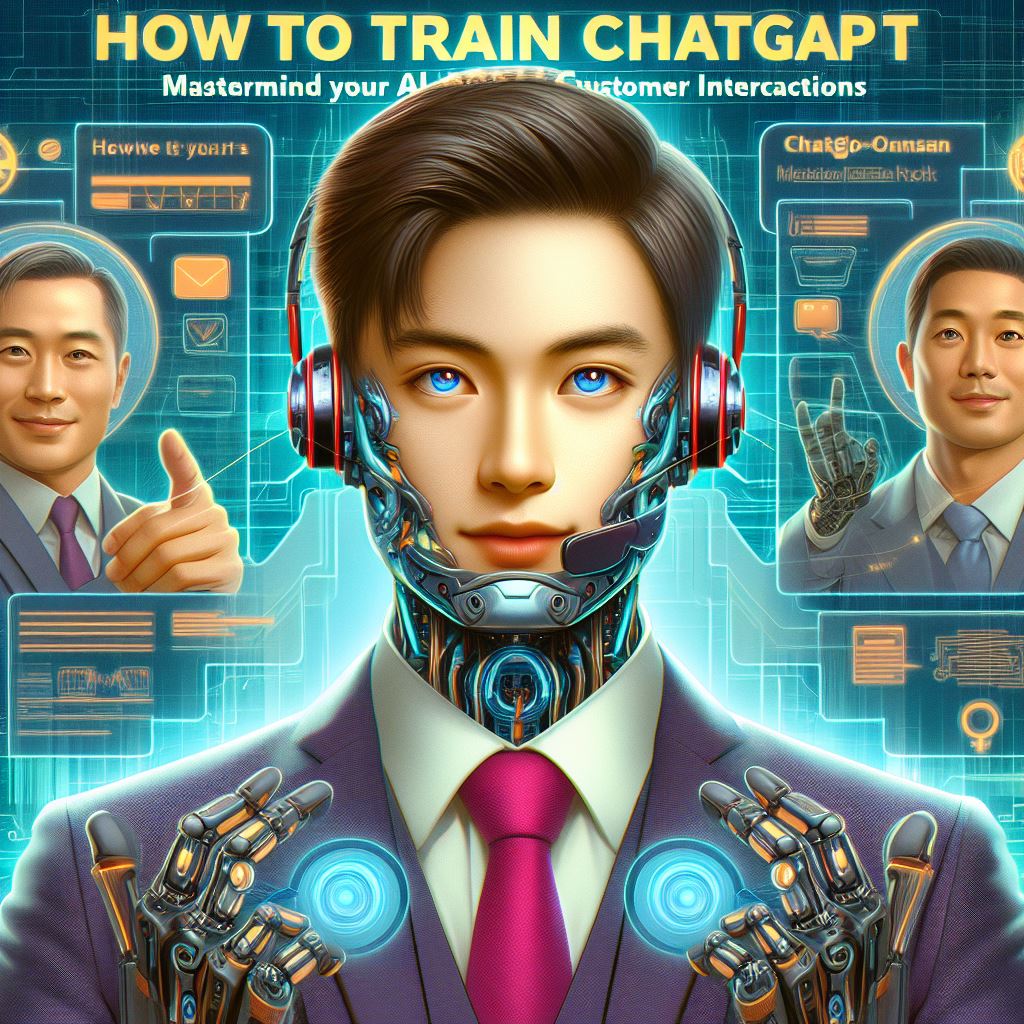Introduction
Consider this: A client enters your virtual store, eager to start a conversation. However, the person they’re speaking to isn’t human. It’s a virtual assistant, one so eerily intelligent and articulate, they could be mistaken for a friend. This friend understands your brand, your products, and your customers’ needs perfectly. They answer questions with ease, recommend exactly what the customer desires, and leave them feeling like they’ve had a real, meaningful conversation.
This is the power of a trained ChatGPT. Forget stiff, robotic chatbots that leave customers frustrated. With the right training, this powerful language model can transform into a brand ambassador, a sales whiz, or even a content creation mastermind, tailored to your specific needs and voice.
But how do you unlock this magic? How can you train ChatGPT to be your go-to AI partner for personal or professional projects? such as AI in web development The solution is here, and in this very guide, we’ll share the exclusive tips for creating a ChatGPT that accurately represents your brand, comprehends your target market, and produces results that will astound you.
Get ready to:
- Get rid of the drabness of generic chatbots and create a conversational AI that is all your own.
- Learn how to train ChatGPT using your own data and add your knowledge and personality to each conversation.
- Open up a world of opportunities with AI’s magical abilities, ranging from creating captivating content to offering individualized customer care..
Now fasten your seatbelt, satisfy your inquisitiveness, and let’s explore the amazing realm of ChatGPT training. Conversations that are tailored and clever are what’s to come!
Table of Contents
Step-by-Step Guide How to Train ChatGPT: From Novice to AI Whisperer
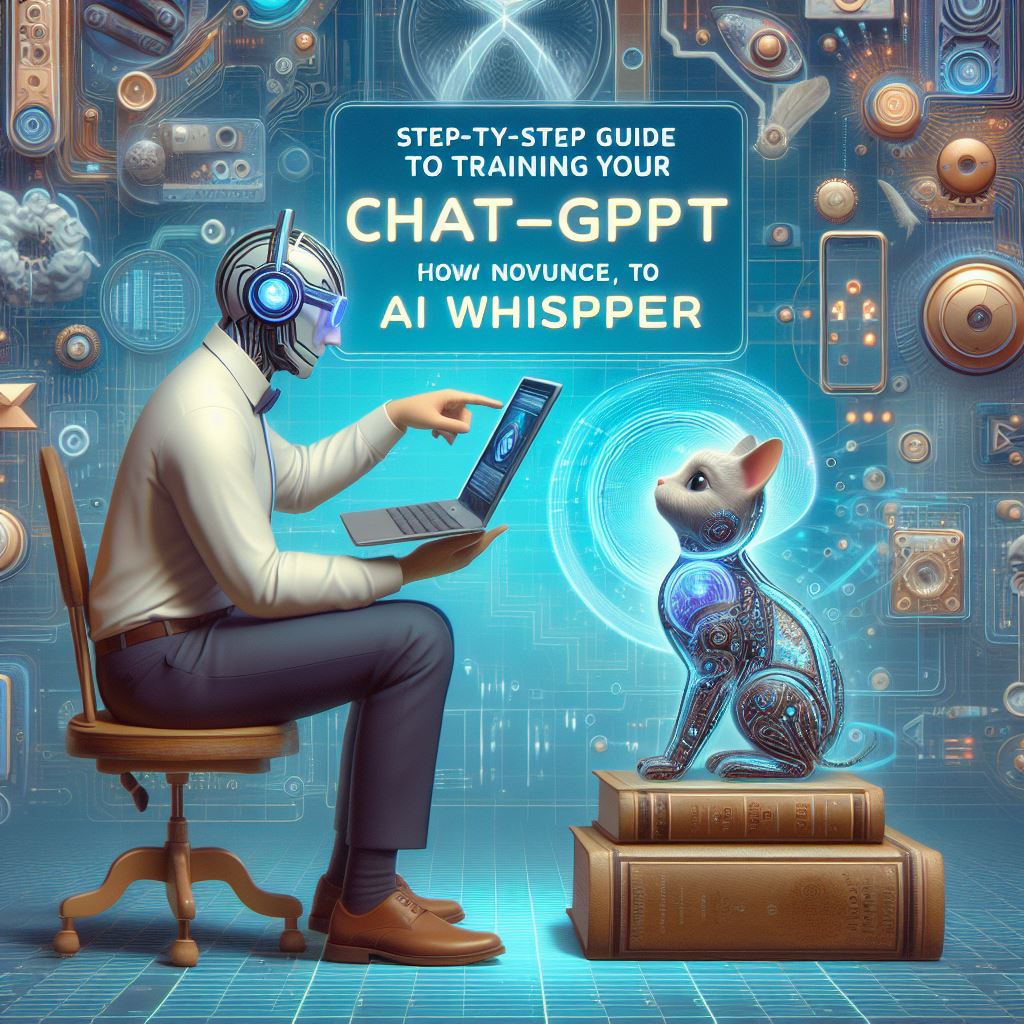
Having seen the revolutionary potential of a well-trained ChatGPT, let’s get down to the details of actually implementing it. Imagine yourself as an apprentice of AI, prepared to go out on a quest to discover the full potential of your ChatGPT. This detailed information will act as your reliable compass, assisting you at every turn in this fulfilling process.
1. Gathering and Preparing Your Training Data:

This is where the magic starts! Your training data is the fuel that will power your ChatGPT’s intelligence and personality. The key is to gather high-quality material that aligns with your specific goals.
Imagine you’re building a ChatGPT for your travel website. You’d want to feed it engaging travel blog posts, destination descriptions, and even customer reviews. This diverse data will equip your ChatGPT to answer traveler questions, recommend hidden gems, and even weave personalized travel narratives.
Remember, quality trumps quantity. Select well-written, educational content that speaks to your target market and embodies your brand. Remember to tidy and arrange your data, getting rid of duplicates and making sure the formatting is consistent. This pre-training prep work lays the foundation for a smooth and successful training process.
2. Obtaining an OpenAI API Key:
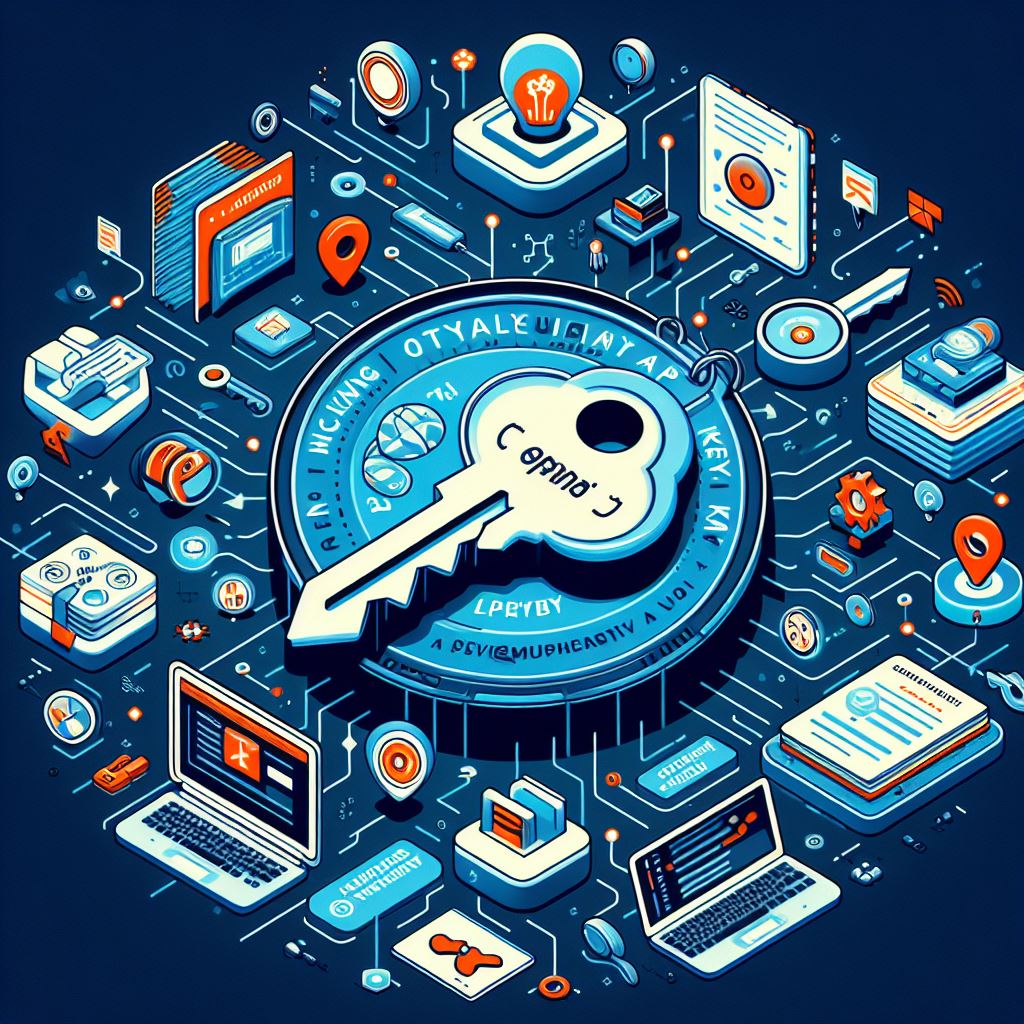
Think of the OpenAI API Key as your passport to the world of ChatGPT training. This unique code allows you to access OpenAI’s powerful cloud infrastructure and train your model there. You just need to visit OpenAI’s website and register for an account to obtain your key, so don’t worry. You’re getting closer to realizing the full potential of your AI companion now that you have your key.
3. Selecting a Training Platform or Method:

Now comes the exciting part: choosing your training tool! While OpenAI itself offers training capabilities, a variety of third-party platforms simplify the process and offer additional features. Explore options like Bard, Replika, or Jasper, each with unique strengths and user interfaces. Consider your technical expertise and desired level of control when making your choice.
Remember, some platforms offer “fine-tuning” options, allowing you to further tweak your ChatGPT’s responses after the initial training. This additional layer of customization ensures your AI companion truly embodies your brand and voice.
4. Feeding Your Data and Fine-Tuning the Model:

It’s time to unleash your carefully curated data! Upload your chosen content to your selected platform and watch the AI magic unfold. This procedure can take minutes or even hours, depending on the platform and volume of data. A well-trained ChatGPT is worth the wait, therefore patience is essential.
Once the training is complete, the fun begins! Explore the “fine-tuning” options to adjust your ChatGPT’s responses. Experiment with different prompts and see how it reacts. Remember, the more feedback you provide, the better your AI companion will understand your preferences and refine its output.
5. Testing and Refinement:
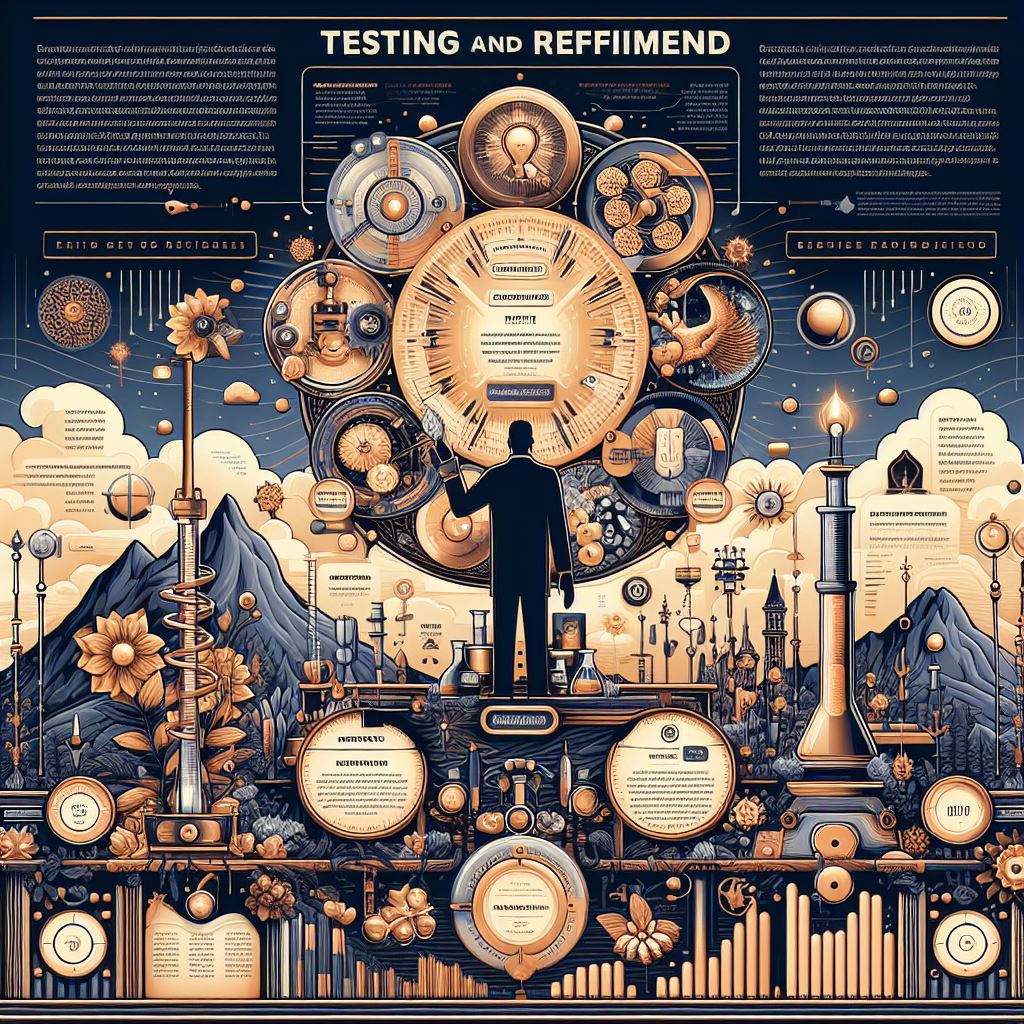
The journey doesn’t end with training. Treat testing as your final quality check. Throw real-world scenarios at your ChatGPT, from customer inquiries to creative writing prompts. Analyze its responses, identify areas for improvement, and iterate on your training data or fine-tuning settings. This ongoing process of testing and improvement guarantees that your ChatGPT remains very effective and produces outstanding outcomes.
You may turn your ChatGPT into a priceless tool for your personal or professional endeavors by following these steps, which will turn you from an inquisitive AI apprentice into a master trainer. Recall that there are countless options. So, get training, experiment, and let your AI companion work its conversational magic!
Best Practices for Effective ChatGPT Training: From Apprentice to Grandmaster
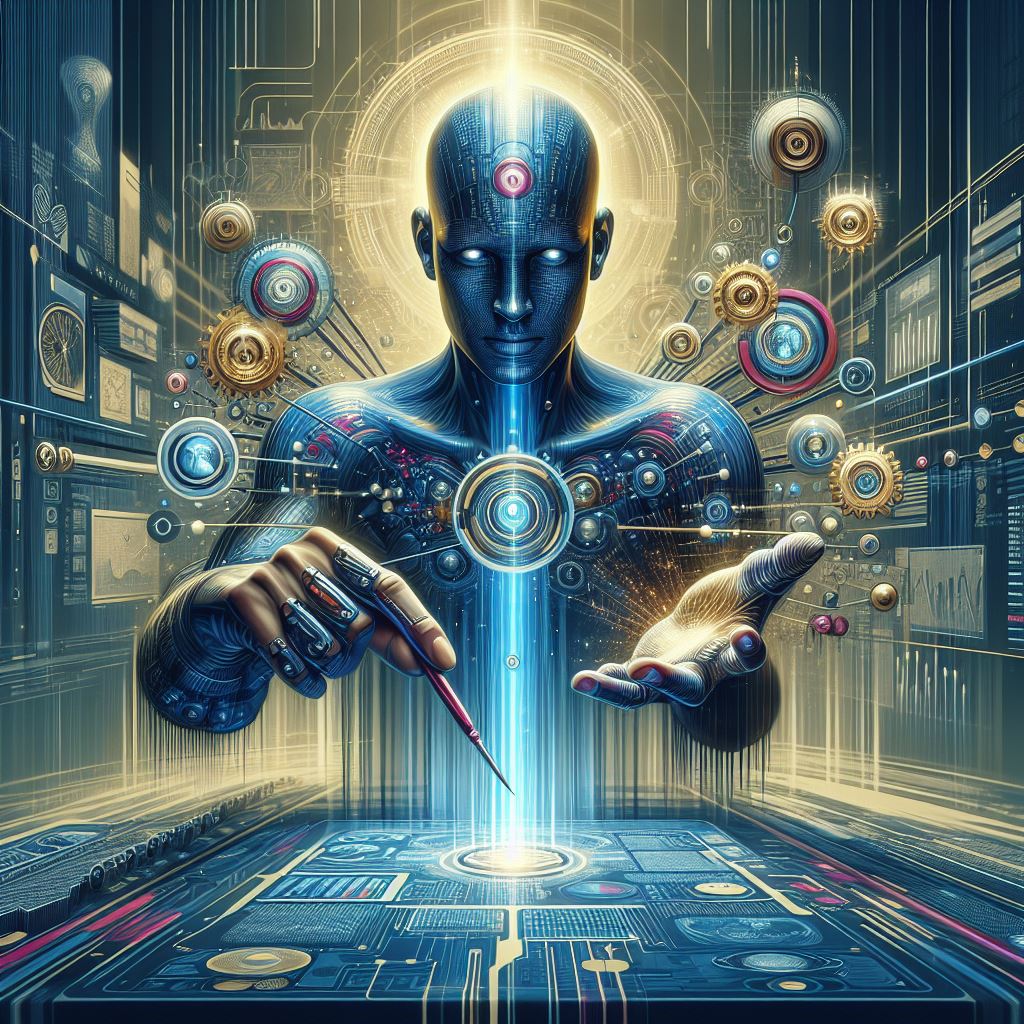
You’ve gathered your data, secured your key, and chosen your training ground. Now it’s time to hone your skills and ensure your ChatGPT emerges from the training process a true conversational champion. In this section, we’ll unveil the secret ingredients for effective training, transforming you from a fledgling AI whisperer into a grandmaster of personalized chatbot creation.
1. Data Quality and Relevance:

Imagine feeding your ChatGPT a diet of junk food. What would the outcome be? A sluggish, incoherent AI companion, struggling to understand and respond effectively. This is why data quality is paramount. Choose content that’s accurate, informative, and aligned with your specific goals.
For instance, training a ChatGPT for a financial website with tabloid headlines and celebrity gossip wouldn’t exactly inspire confidence. Stick to relevant financial news articles, analyst reports, and informative blog posts. By feeding your AI companion nutritious data, you’ll equip it with the knowledge and expertise needed to excel in its domain.
Remember, relevance is just as crucial. Consider the nuances of your target audience and brand voice. If you’re training a ChatGPT for a light-hearted humor blog, inject it with witty articles, stand-up routines, and even comedic podcasts. This targeted data will ensure your AI companion speaks the language of your audience, delivering witty retorts and side-splitting jokes that resonate deeply.
2. Clarity and Conciseness in Prompts:
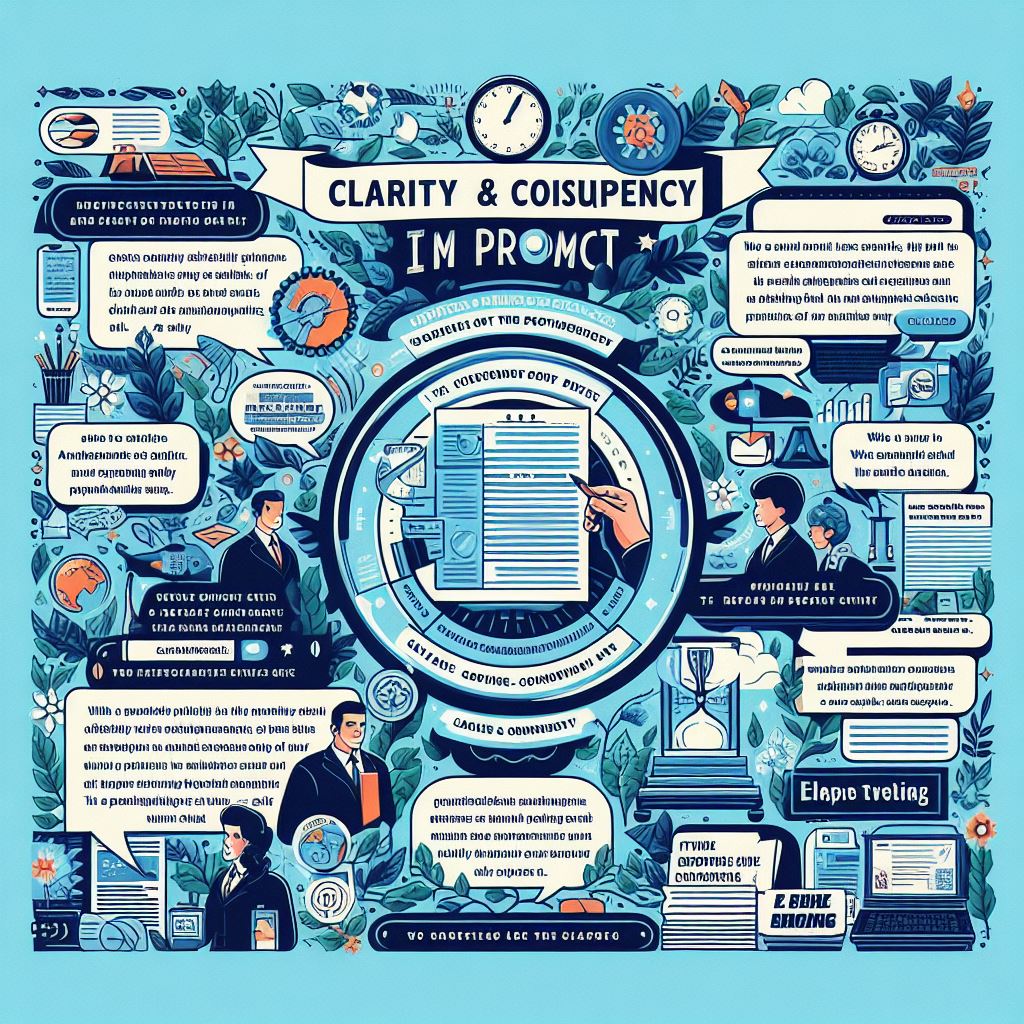
Think of the prompts as your instructions to your ChatGPT. The clearer and more concise they are, the better your AI companion will understand your expectations. Don’t give it vague requests like “Write a blog post about travel.” Rather, be more precise: “Write a 1,000-word blog post detailing 5 distinct hidden gems in Southeast Asia that can be visited for less than $50 per day for our audience interested in inexpensive travel.”
It’s more likely that your ChatGPT will produce individualized, excellent results the more information you give it. Include desired tone, target audience, and even specific keywords you want it to incorporate. Remember, your prompts are like roadmaps guiding your AI companion towards conversational excellence.
3. Experimentation and Feedback Loops:
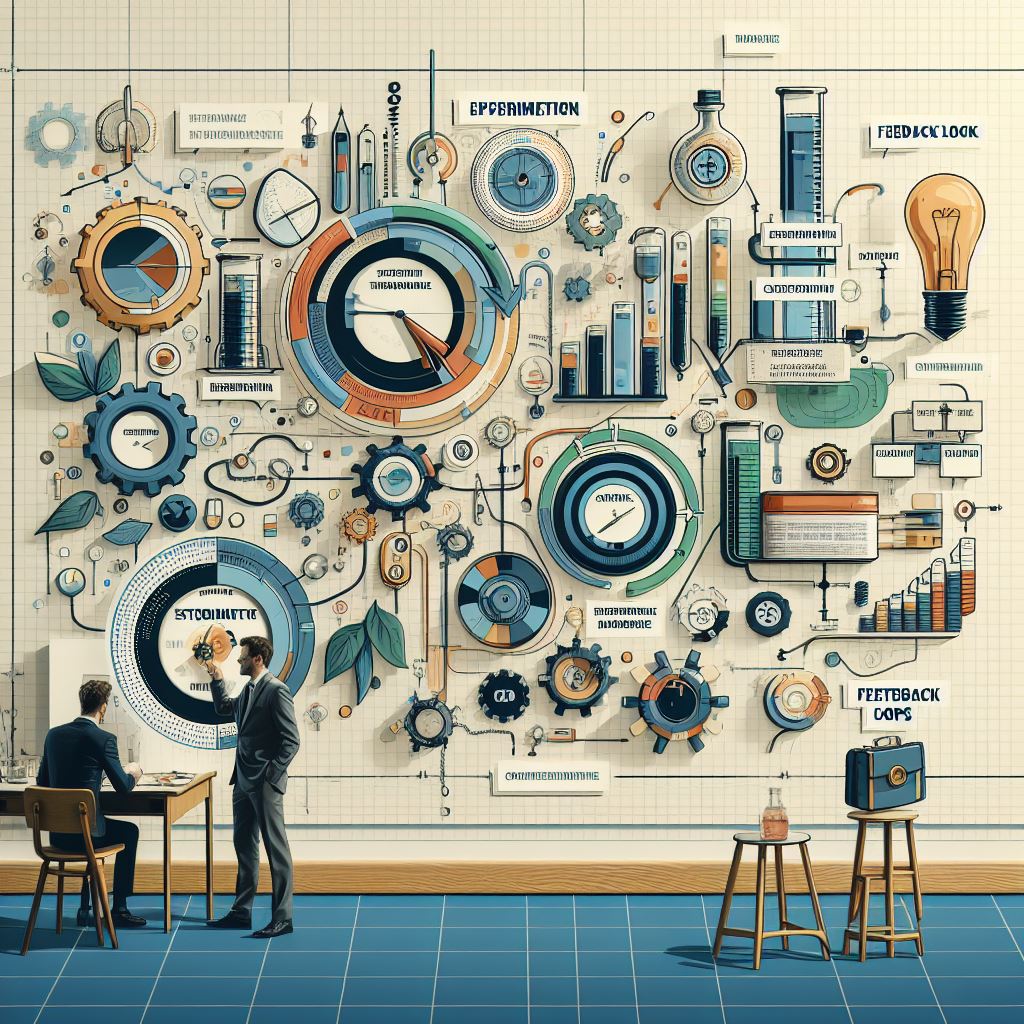
Consider training as an ongoing process of trial and error and improvement. Play around with different data sets, prompts, and fine-tuning choices without fear. Every communication you have with your ChatGPT—from informal discussions to formal assessments—provides an opportunity to grow and learn.
Examine the responses from your AI partner, pinpoint any weak points, and modify your training set or prompts accordingly. Keep in mind that ChatGPT learns and adapts more quickly the more feedback you give it. This loop of experimentation and refinement ensures your AI companion evolves alongside your needs and stays at the forefront of intelligent conversation.
By mastering these best practices, you’ll elevate your ChatGPT training from a simple technical exercise to a transformative art form. Your companion will transform into a conversational masterpiece that represents your business, engages your audience, and produces genuinely astounding outcomes as you become a sculptor of AI characters.
Unleashing the Magic: Real-World Applications of a Trained ChatGPT

With the knowledge and abilities we’ve given you, you may create a custom ChatGPT that speaks to you and is aware of your needs. Let’s now explore the amazing world of possibilities and see how a trained ChatGPT might transform your personal or professional endeavors.
1. Customer Support: Personalized Interactions and Increased Efficiency:
Envision customer support agents that not only provide precise answers to inquiries but also strike up cordial, individualised conversations. This is the magic of a trained ChatGPT! You can build a virtual assistant that comprehends the wants of your clients and provides outstanding service by providing your AI companion with product manuals, support documents, and customer inquiries.
Imagine an online store where a knowledgeable ChatGPT welcomes every customer, suggests items based on their past purchases, and responds to inquiries regarding sizing and delivery. This personalized touch fosters customer loyalty and increases sales conversions. Additionally, your human customer service team can focus on complex issues, knowing the ChatGPT has handled the routine inquiries efficiently.
2. Content Creation: Unique and Engaging Text at Scale:
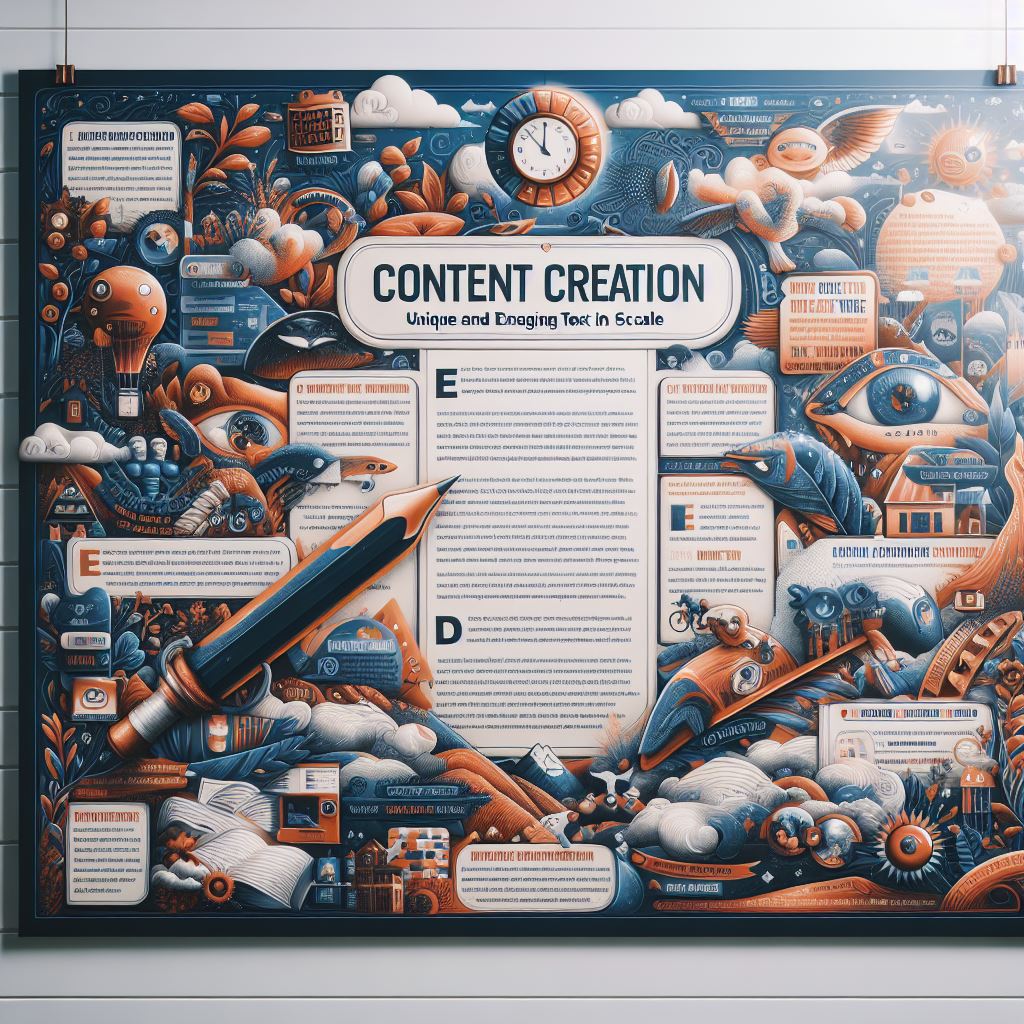
Need engaging product descriptions, captivating blog posts, or even witty social media captions? Your trained ChatGPT has you covered! Your AI partner can create high-quality, on-brand material at scale if it has access to your brand guidelines and content style guides. Imagine automating the creation of blog entries detailing your most recent product updates or customizing product descriptions for every visitor depending on their browsing behavior.
This guarantees a consistent brand voice across all of your communication channels and frees up your content writers to concentrate on strategic projects. An experienced ChatGPT may be your creative powerhouse, producing original and educational text material that connects with your audience, whether you’re a blogger who struggles to meet deadlines or a marketer searching for interesting social media content.
3. Sales and Marketing: Tailored Conversations and Lead Generation:

Envision a sales chatbot that leads potential customers toward a purchase by conversing with them in a conversational manner and providing answers to their inquiries. This is the potential that your sales and marketing team can unleash with a trained ChatGPT. Sales scripts, product expertise, and competitor information may be fed into your AI companion to build a virtual salesperson that knows your target market and customizes its approach for each individual.
Think of a website where a trained ChatGPT chats with potential customers, qualifies their needs, and schedules appointments with your sales team. This proactive lead generation saves time and resources, ensuring your human sales reps focus on qualified leads with a higher conversion rate.
4. Internal Training and Knowledge Management:
Programs for learning and development can be expensive and time-consuming. Enter the trained ChatGPT, your secret weapon for efficient internal training and knowledge management. Provide your AI partner with corporate guidelines, product details, and training materials, and you can build an interactive knowledge base that staff members can access from anywhere at any time.
Imagine technical teams debugging problems with the help of a virtual AI expert, or new hires understanding business policies through interactive chatbot chats. This self-service knowledge base guarantees that everyone in your company has access to the most recent information while lowering training expenses and enhancing employee onboarding.
These hardly scratch the surface of a trained ChatGPT’s enormous possibilities. The opportunities are as endless as your creativity, ranging from individualized consumer encounters to innovative content creation. Unleash the power of your customized ChatGPT now, and see how it completely changes your personal or professional endeavors.
Your ChatGPT Concierge: Demystifying FAQs and Common Roadblocks
Even the most seasoned AI trainers have questions. We’ve devoted this area to answering the most common questions about ChatGPT training in order to make sure your experience is seamless and full of conversational enchantment. Think of this as your reliable AI concierge, available to help you with any questions or obstacles you may run against.
1. Is it possible to train your own ChatGPT?
Absolutely! The unique quality of ChatGPT is its capacity for customization via training. You can create an AI companion that meets your unique demands and represents your brand voice and audience with the correct data, resources, and commitment. You now have the information and actions necessary to accomplish that thanks to this guide.
Remember, success lies in choosing high-quality, relevant data, utilizing the right training platform, and continuously testing and refining your ChatGPT’s responses. Embrace the experimentation process, and you’ll soon witness the transformative power of a bespoke AI companion.
2. How do I train my data in ChatGPT?
Training your data in ChatGPT involves several key steps. First, gather informative and relevant content aligned with your desired goals. Make sure it is well-written, error-free, and speaks to your target audience and brand. Platforms like Bard and Replika offer convenient data upload options, simplifying the process.
Next, choose your training platform based on your technical expertise and desired level of control. While third-party choices like Jasper offer additional functionality and user-friendly interfaces, OpenAI itself provides training capabilities. Try out a variety of choices to determine which one best suits your requirements.
Start the training process as soon as the file is submitted; the length of time this takes will depend on the platform and volume of data being used. Patience is key, as a well-trained ChatGPT is worth the wait. Finally, test and refine your AI companion’s responses. Provide feedback, adjust training data if needed, and utilize “fine-tuning” options to personalize its output.
3. Can you train ChatGPT to write in your style?
Absolutely! This is one of the core strengths of training. You can train ChatGPT to imitate your distinct writing style by providing it with examples of your writing voice, tone, and style. Give it blog entries, articles, or even emails you’ve written, and see how it responds with your subtle language usage.
Your ChatGPT’s ability to comprehend your style preferences will improve with the diversity and comprehensiveness of your training data. Remember, continuous testing and feedback are crucial. By refining its responses based on your input, you can gradually sculpt your AI companion into a master of your personal writing style.
4. Can I train chatbot on my own data?
It is feasible to train a chatbot using your own data, and doing so is essential to producing a conversational experience that is both highly tailored and productive. Your chatbot may provide more accurate and insightful answers by using your own customer emails, support tickets, and product knowledge base, which gives it a deeper understanding of your particular industry and target market.
User-friendly chatbot training interfaces are provided by platforms such as ManyChat and Dialogflow, which may be easily integrated with your own data sources. Recall that your chatbot’s efficacy is directly impacted by the caliber and applicability of your data. Make sure it answers a range of client questions and scenarios, is error-free, and is well-organized.
5. Can I train GPT 3 with my own data?
GPT-3 itself, the underlying technology powering ChatGPT, can be indirectly trained with your own data through fine-tuning methods within different platforms. While OpenAI’s direct access to GPT-3 training is limited, platforms like Bard and Jasper offer fine-tuning options that allow you to influence your ChatGPT’s responses based on your data sets.
This fine-tuning process involves feeding your AI companion snippets of text or prompts that reflect your desired output. After examining these inputs, the platform modifies the internal settings of your ChatGPT, progressively modifying its replies to conform to your preferences. Recall that fine-tuning is an iterative process, and that getting constant input and testing is essential to getting the best outcomes.
Therefore, training your own ChatGPT is both feasible and rewarding, regardless of whether you’re an experienced writer looking for a stylistic twin or a business owner seeking a customer service virtuoso. Embrace the power of your data, the flexibility of training platforms, and the continuous loop of experimentation and refinement, and you’ll unlock the true conversational magic that lies within your personalized AI companion.
Conclusion: The Future of Conversations is Yours to Tailor
Together, we’ve set out to discover the mysteries behind how to train your own ChatGPT. You now know exactly how to collect information, select platforms, and fine-tune your AI partner. It’s time to consider the life-changing possibilities that lay ahead as you prepare to unleash your unique conversational champion.
The future of conversations is no longer a fixed script delivered by cold robots.It’s a colorful tapestry stitched together with your creativity, knowledge, and distinct voice. You have the amazing chance to mold the AI companions that will engage with your clients, create communities, and even produce creative material like never before thanks to ChatGPT training.
Remember, the possibilities are endless:
- Suppose we live in a world where each website visitor has a personal AI advisor that knows exactly what they need and makes incredibly accurate product recommendations.
- Imagine virtual CSRs who provide consumers with the impression that they have just spoken with a true friend by responding to inquiries, offering emotional support, and engaging in lighthearted banter.
- Imagine a day in the future where creating material is done on a whole new level, with AI assistants serving as your collaborators while you write, compose, and even edit your literary masterpieces.
Thanks to the wonders of tailored AI, human-machine contact is entering a new era, and this is not just science fiction. Take the time to train your own ChatGPT, play around with its features, and see how it develops into an expression of your voice, brand, and conversational future.
Remember, the keys to success lie in:
- The quality and relevance of your training data.
- Your willingness to experiment and refine.
- The continuous feedback loop you establish with your AI companion.
So, step into the role of the AI whisperer, unleash your creativity, and shape the future of conversations. The world of personalized, intelligent interaction awaits, ready to be molded by your imagination and the transformative power of a trained ChatGPT.

